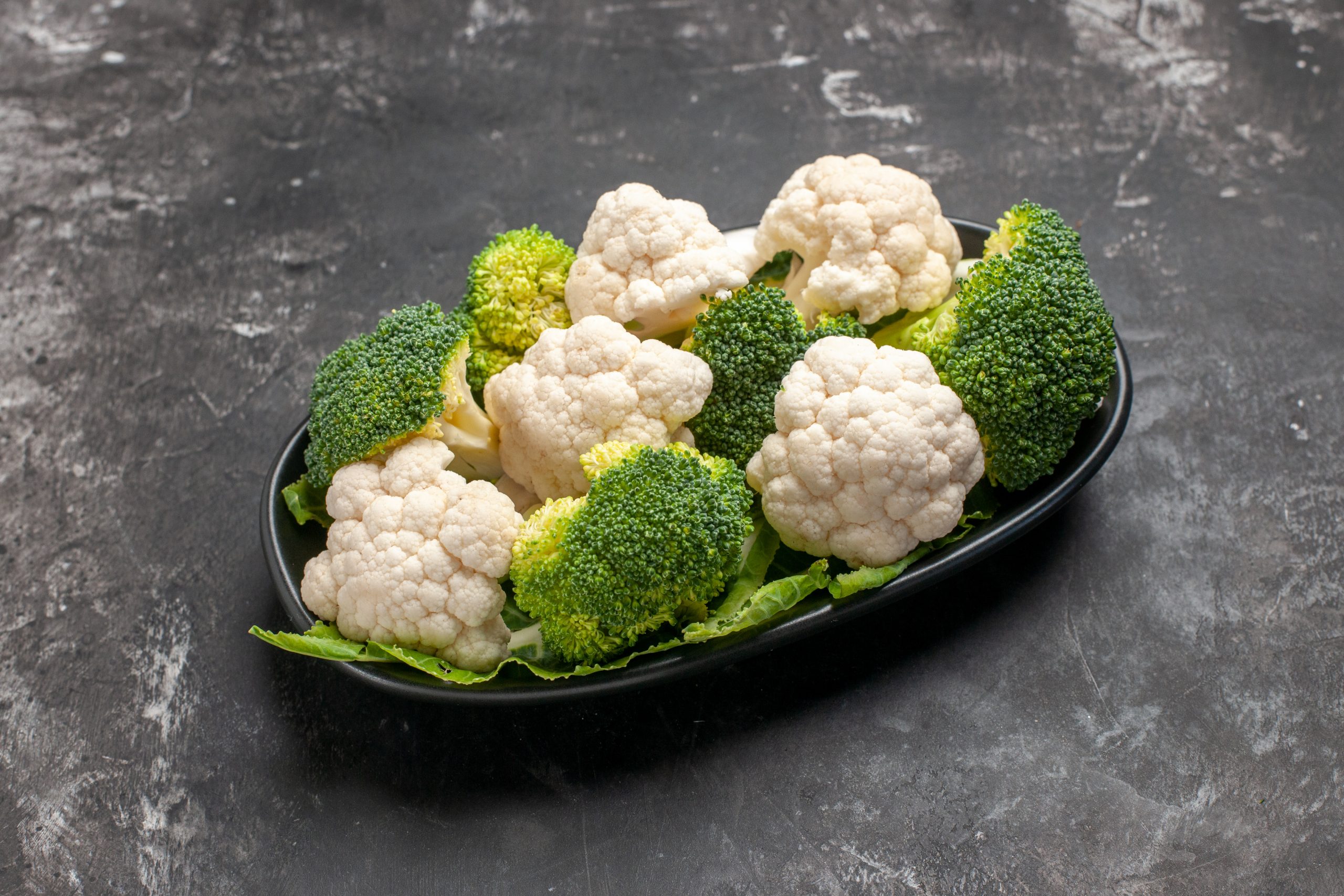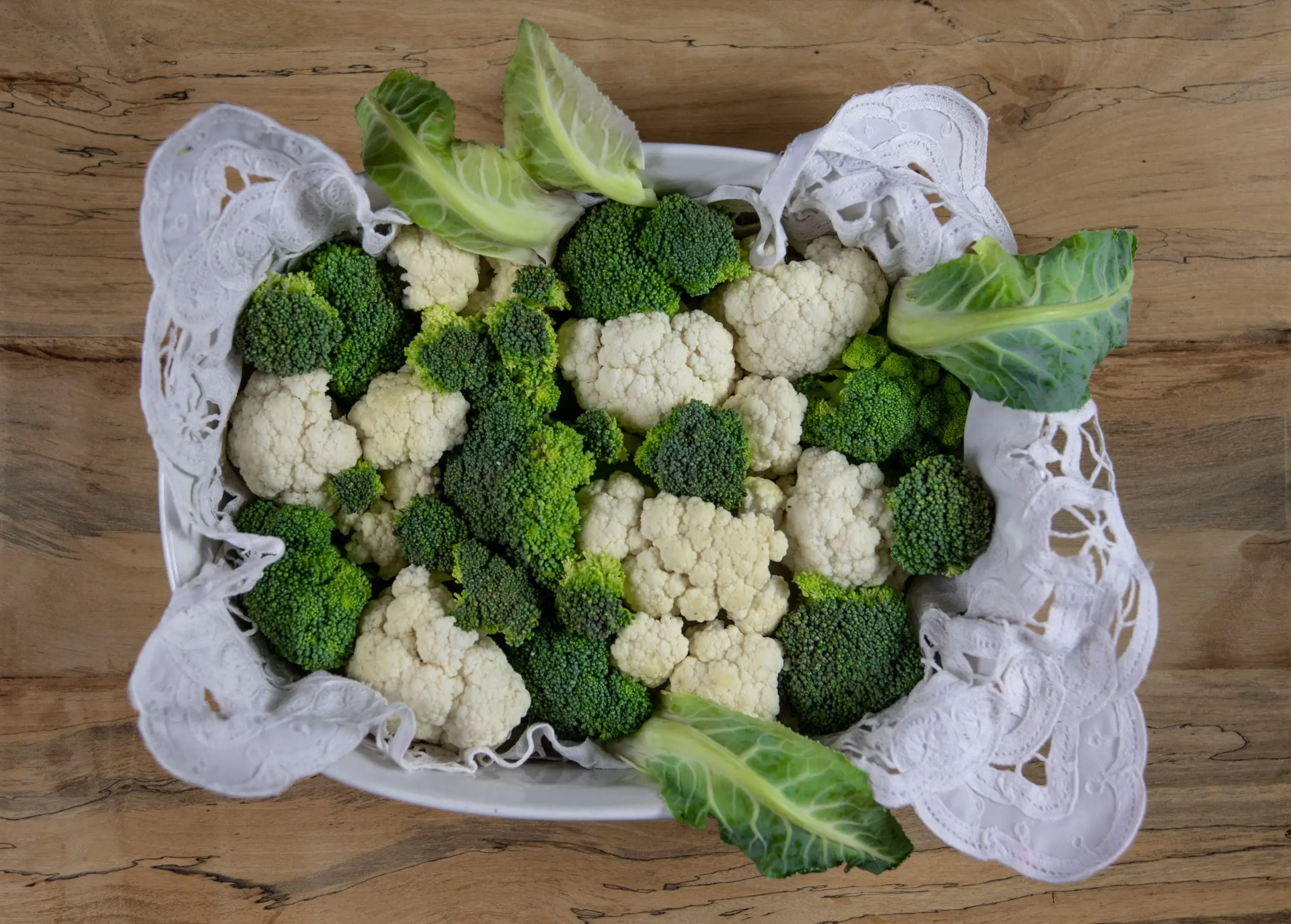Whether you’re looking to freeze broccoli or cauliflower, you’ll want to ensure that you know how to freeze them properly. You can do this by preparing the produce, then freezing it. This can help keep the veggies fresher for longer. To help you prepare the produce, you’ll need to blanch it. This helps to kill any microorganisms that may be on the product. In addition, blanching helps to clean the produce.

How to Freeze Broccoli and Cauliflower?
Broccoli and cauliflower can be frozen. Keep in mind that blanching destroys the enzymes that cause fruit to ripen more slowly, protecting the vegetable’s color, texture, and nutrition. Within one minute of the vegetables being submerged, the water should be fully boiled. Generally, 1 pound of vegetables to 1 gallon of water is the ratio.
- Start keeping track of when the water reaches a full boil, and stop cooking the meal by plunging it into ice water immediately.
- Cauliflower or broccoli packaged in freezer Before packaging, remove any air from freezer containers or bags.
- Headroom is not necessary.
- Date and label.
- The florets can be tray-packed by patting them dry with a paper towel, arranging them in a single layer on a tray, and freezing them for about one to two hours or until frozen.
Quickly take the individually frozen florets out of the freezer and place them in an airless bag or container before placing them in the freezer. Headroom is not necessary. Date and label.
Blanching helps to Clean & Destroy Microorganisms
Blanching techniques can make vegetables softer, brighter, and easier to store. They can also help clean and destroy microorganisms on the surface of the produce, which helps to prevent spoilage.
Blanching is a pre-treatment process, usually performed before the main cooking or canning operation. It involves plunging a vegetable into boiling water and then quickly exposing it to steam. In most cases, vegetables are boiled, but steam blanching is preferred for some vegetables.
The blanching method depends on the water’s temperature, the type of food, and the method of heating. When blanching vegetables in boiling water, the temperature should be at least 212 degrees F. If you are using steam, the temperature should be at least 150 degrees F.
Blanching can also be performed in a microwave oven. If you choose to microwave blanch your vegetables, you should use small amounts. It may not be effective and could result in a loss of texture and flavor. Following the manufacturer’s directions for your specific microwave model is a good idea.
Preparing for Freezing
Having fresh vegetables stored in the freezer is an ideal way to reduce your cooking time and keep them fresh for longer. In addition, freezing is an easy way to cut costs.
However, it is important to freeze fresh vegetables properly. This will help them retain their vitamins and flavor.
Blanching and freezing broccoli and cauliflower can be done in a few simple steps. First, rinse the cauliflower head to remove any dirt or garden bugs. You will also want to cut it into florets.
The florets should be no larger than one-and-a-half inches in diameter. Leaving them in the water will help them remain bright green, but they may start to darken.
Next, you will want to place the florets in a colander to drain any excess water. This will prevent them from sticking together.
You will then want to place them in a large bowl of iced water. This will help shock the cauliflower and prevent moisture from rising to the surface.
Thawing Frozen Broccoli
Whether cooking a meal or just making an appetizer, thawing frozen broccoli and cauliflower is a great way to keep your vegetables fresh. The trick is to make sure you remove the water from the florets. This will ensure the broccoli is reheated and cooked to its best potential.
First, you’ll need to clean and defrost the broccoli and cauliflower. This may seem like a chore, but it’s fairly easy. You can remove excess water with a colander placed over your sink. A paper towel is also good for removing moisture from frozen vegetables.
Next, you’ll need to slice the florets into smaller pieces. This will increase their surface area and allow them to cook faster. This also means you’ll be able to get a nice browned and crisp piece of broccoli.
You can also bake your cauliflower and broccoli. This method is simple and takes a little more effort than the microwave. First, line a large baking sheet with aluminum foil. You may need to preheat the oven to 400 degrees.
Air Fryer
You can easily prepare a tasty and healthy side dish using an air fryer. Broccoli and cauliflower are packed with nutrients, including Vitamin C and fiber. You can cook vegetables in minutes without mess or cleanup with an air fryer.
Before cooking, it is important to place the vegetables in a colander basket to rinse off any excess moisture. You will also need to add water to the air fryer to steam the broccoli. The moisture in the water evaporates as the broccoli cooks. This prevents it from burning in the air fryer.
After the vegetables are prepared, they can be stored in an airtight container for up to 3 days. You can also freeze them for up to 2 months. In addition, you can store leftovers for up to a week.
For best results, the air fryer should be preheated. You can either preheat the air fryer manually or set the temperature to 380 degrees Fahrenheit.
How should Broccoli & Cauliflower be Stored in the Freezer?
Longer-term storage What should you do if you have an abundance of broccoli or cauliflower that requires you to have a month’s worth of supply? What if one or two weeks are insufficient? Try freezing your vegetables if you want to. To start, wash any dirt off your broccoli and cauliflower by soaking them in water for a short while.
- After that, cut each thing into little pieces.
- While chopping the broccoli may require using a knife or kitchen shears, once the green base has been eliminated, you should be able to separate the cauliflower with your hands.
- Prepare to ice water and boiling water next.
- Broccoli and cauliflower should be cooked separately for 3 to 5 minutes before being chilled in ice water.
Dry the broccoli and cauliflower by placing them in a colander or strainer. Give them three minutes to unwind. By destroying germs and reducing the activity of enzymes, the blanching technique prevents the breakdown of vegetables. Place the vegetables in freezer bags, remove any extra air, seal them, and store them in the freezer after any extra water has been drained.
Can I Freeze Uncooked Broccoli & Cauliflower?
In a word, yes! How to do it is as follows:
- Trimmed florets should be placed on a baking sheet with aluminum foil or parchment paper. With a clean kitchen towel or paper towel, pat the florets dry.
- Transfer the florets to a sizable plastic bag or container.
- To help you subsequently remember what was inside, seal the bag or container and properly label the contents.
- The bag or container should be completely airtight before being sealed.
- Freeze for a few days or a whole night, depending on your preference. Before eating, let the food fully thaw.
Can you Wash Broccoli & Cauliflower with Vinegar Before Freezing?
In a word, yeah. It’s best to wash your broccoli and cauliflower in vinegar before freezing them, especially if they were grown on your own. Before freezing, you should remove any dirt, vermin, or insects.
A procedure for freezing your broccoli and cauliflower after washing them with vinegar;
- Water in a bowl is vinegared.
- Wash the broccoli and cauliflower in the bowl very well.
- In a different bowl of clean water, rinse the broccoli and cauliflower.
- Use a towel to pat the broccoli and cauliflower dry.
- Trim the stalk’s edges with a knife.
- Put the broccoli and cauliflower in a tight-fitting container or a plastic bag with a tight seal.
- Please keep it in the refrigerator.
Or by performing the above-described freezing technique.
Reasons why your Broccoli & Cauliflower Still went Bad After Freezing
Your broccoli and cauliflower may have been frozen for some time, but they still tasted bad and had a rotten smell, leaving you to wonder what went wrong. Here are a few things you may have done incorrectly:
- Without likely blanching or freezing.
- Freezing spoiled or decaying cauliflower and broccoli.
Reference: Broccoli and Cauliflower: Production, Quality, and Processing
How to Tell if the Broccoli & Cauliflower are Good Before Freezing?
Knowing whether broccoli and cauliflower are good or bad will help you avoid buying bad produce and prevent spoilage after freezing. Instead of smelling nasty, they have a pleasant perfume. Here are a few ways to check your broccoli and cauliflower before freezing to make sure they’re not bad:
- The broccoli’s trunk is a bright green tint, while the florets are a dark green hue. Yellow-flowered broccolis are already beginning to deteriorate.
- On the trunk and flowers, there are no spots.
- The broccoli and cauliflower florets are grouped, and the heads are tightly packed.
Conclusion
Freezing your broccoli and cauliflower’s flavor, color, and texture is the best way to keep your broccoli and cauliflower’s flavor, color, and texture. When vegetables are in short supply, freezing can help you keep them and save waste.
Broccoli can be kept in the refrigerator without being blanched if packaged properly. This can be done by arranging the broccoli in a bouquet, covering it with a damp paper towel, or placing it in a ventilated plastic bag. To freeze food for long-term storage, you must first blanch the food before transferring it to a plastic bag and freezing it.

